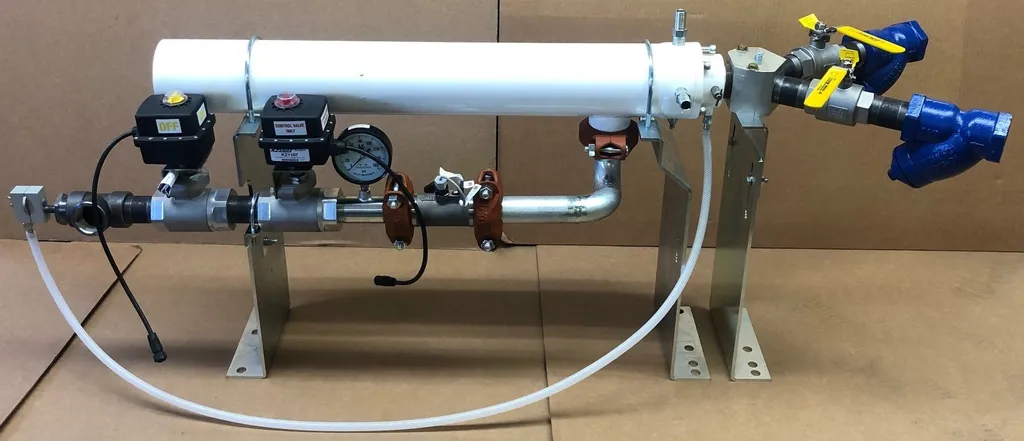Kaltra, an international company based in Munich, stands as a beacon of innovation in the realm of thermal management. With a presence in over 60 countries, Kaltra dedicates itself to manufacturing energy-efficient chillers, free cooling systems, precision air conditioners, and microchannel heat exchangers, primarily for data centers and diverse industrial applications. But what truly sets them apart? Their unwavering commitment to environmental friendliness and rock-solid reliability.
The Heart of Efficient Cooling – Heat Exchangers
At the core of any cooling system lies the heat exchanger. Its job is simple yet crucial to transfer heat from one medium to another. Traditional designs often rely on copper tube and fin configurations, a technology that has served us well for decades. However, the landscape is evolving, and new materials and designs are emerging that offer significant advantages.
Understanding the Traditional Copper Tube and Fin
Copper’s high thermal conductivity makes it a popular choice for heat exchangers. The familiar design consists of copper tubes through which refrigerant flows, surrounded by aluminum fins that increase the surface area for heat transfer. This design is well-understood, time-tested, and relatively easy to manufacture. But is it the ultimate solution?
The Rise of the Microchannel Coil
Enter the microchannel coil. Instead of individual tubes, this design employs a series of small, parallel channels through which the refrigerant flows. These channels are typically made of aluminum and brazed together to form a compact, highly efficient heat exchanger. What advantages does this approach bring to the table?
Microchannel Coil vs Copper – A Side-by-Side Look
The debate regarding microchannel coils versus copper tube and fin designs is not merely academic. It carries significant implications for the performance, efficiency, and environmental impact of cooling systems. Let’s examine some key differences.
-
Efficiency – Microchannel heat exchangers, and specifically microchannel coils, often boast superior heat transfer coefficients compared to traditional copper designs. The increased surface area and optimized refrigerant flow paths lead to more effective heat exchange. This translates to higher energy efficiency and lower operating costs. Could this be the key to a greener future?
-
Refrigerant Charge – Microchannel designs typically require a significantly smaller refrigerant charge than copper tube and fin counterparts. This is beneficial for both cost and environmental reasons, as it reduces the potential impact of refrigerant leaks. Less refrigerant means less environmental damage.
-
Size and Weight – Microchannel heat exchangers are generally more compact and lighter than equivalent copper designs. This is particularly advantageous in applications where space and weight are critical factors, such as in mobile cooling systems or densely packed data centers. A lighter footprint can make a world of difference.
-
Corrosion Resistance – While copper is known for its corrosion resistance, aluminum alloys used in microchannel coils can be treated to offer excellent resistance to corrosion as well. The choice of materials and protective coatings plays a crucial role in ensuring long-term reliability.
-
Cost – The initial cost of microchannel heat exchangers can sometimes be higher than copper tube and fin designs. However, the long-term cost savings associated with improved energy efficiency and reduced refrigerant charge often outweigh the initial investment. It’s about playing the long game.
Kaltra’s Commitment to Innovation and Sustainability
Kaltra embraces the benefits of microchannel technology in its products, recognizing its potential to improve energy efficiency and reduce environmental impact. By utilizing microchannel heat exchangers in its chillers, free cooling systems, and precision air conditioners, Kaltra aims to deliver solutions that are both environmentally responsible and highly reliable. Do they see this as a responsibility?
Applications Across Industries
The benefits of microchannel technology extend across a wide range of industries. In data centers, where cooling demands are immense, microchannel heat exchangers help to minimize energy consumption and reduce the carbon footprint. In industrial applications, they provide efficient and reliable cooling for critical processes.
Looking Ahead
As the demand for energy-efficient and environmentally friendly cooling solutions continues to grow, microchannel technology is poised to play an increasingly important role. Kaltra remains at the forefront of this evolution, constantly innovating and refining its products to meet the evolving needs of its customers. The world is changing, and Kaltra is ready to meet the challenges ahead. The efficiency gains achieved with microchannel coils over traditional copper designs are compelling.
Choosing the right heat exchanger technology is a critical decision that can significantly impact the performance, efficiency, and environmental footprint of a cooling system. Understanding the pros and cons of microchannel coil vs copper tube and fin designs is essential for making informed choices. Kaltra’s commitment to innovation and sustainability ensures that its customers have access to the most advanced and efficient cooling solutions available.


